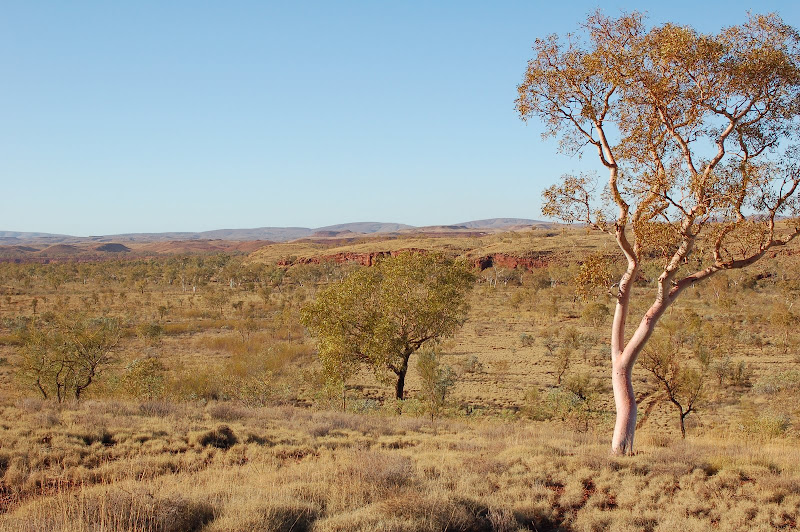
Most of my fauna survey work has been in the cool South-west region (SW), often near Perth. A lot of our surveys in mining areas has been in the hot and dry Pilbara region (PIL), with some occasional work in the Murchison (MUR) and Gascoyne (GAS).

These are basically the general regions of Western Australia. A cool, wet South-west getting hotter and dryer going inland and northwards, with a more tropical monsoon habitat in the Kimberleys. Each region has it's own special plants and animals.
 Some of the typical habitats travelling northwards through WA. This is an area in the northern Goldfields, with eucalpyt woodlands, rock outcrops and salt lakes.
Some of the typical habitats travelling northwards through WA. This is an area in the northern Goldfields, with eucalpyt woodlands, rock outcrops and salt lakes. A view of the arid Gascoyne region, dry rocky plains with acacia shrublands with Ironstone outcrops. Lots of unique animals can be found on Ironstone outcrops, as these have acted almost like islands over the ages and limited the spread of animals across a sea of arid plains.
A view of the arid Gascoyne region, dry rocky plains with acacia shrublands with Ironstone outcrops. Lots of unique animals can be found on Ironstone outcrops, as these have acted almost like islands over the ages and limited the spread of animals across a sea of arid plains.

The start of the south Kimberleys near Halls Creek. Beautiful rivers and creeks cutting through sandstone gorges with grass plains in between.

No comments:
Post a Comment